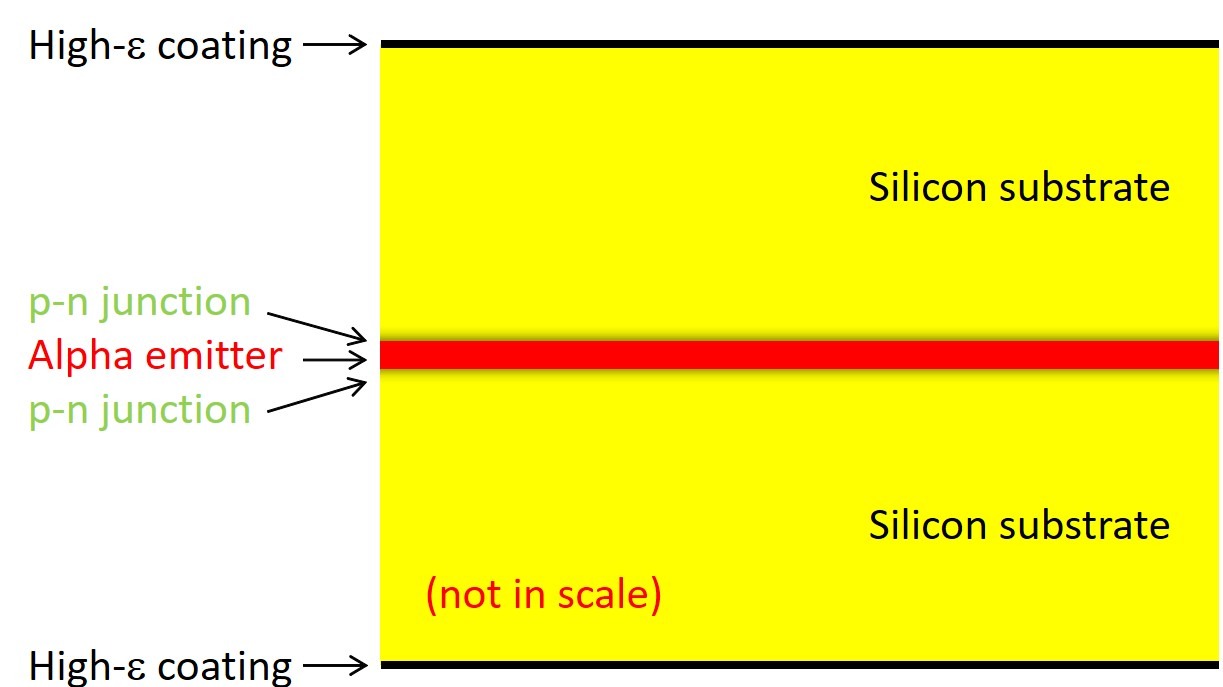Radioisotope generators provide electrical power for spacecrafts by converting the energy released by the decay of radioisotope fuel into electricity. The most common type is represented by Radioisotope Thermoelectric Generators (RTGs), using Pu238 fuel and thermoelectrics to convert heat into electricity. Since they have no moving parts that can fail or wear out, RTGs are extremely reliable; however typical energy conversion efficiency is just about 5% [1]. Non-thermal converters (voltaic devices) make use of the photoelectric effect much in the same way a solar cell does. However, instead of having incoming photons creating individual electron-hole pairs in the depleted region of a semiconductor junction, high-energy particles (typically a few keV for beta or a few MeV for alpha particles) produce each hundreds of thousand or millions of pairs at the same time. Theoretical efficiency can be several times that of thermal converters, however they are rarely used because performance quickly degrades due to radiation damage [2]. The Lazarus effect has been shown to greatly reduce radiation damage effects in semiconductor detectors when operated at cryogenic temperatures [3]. Liquid Nitrogen cooled silicon devices outperformed diamond and other high band gap materials by orders of magnitude in terms of maximum radiation dose in High Energy Physics (HEP) experiments [4]. An alpha voltaic silicon radioisotope generator could operate in space at the required low temperature just exchanging radiative energy with the deep space, not requiring any active cooling. Moreover, using silicon as semiconductor for the generator allows integrating control electronics in a monolithic approach [5]. This could be particularly suited for future chip-sized deep space probes. For more conventional applications a thin-film semiconductor junction [6] deposited on a flexible heat conducting substrate could allow folding a large surface within a small volume at launch.

